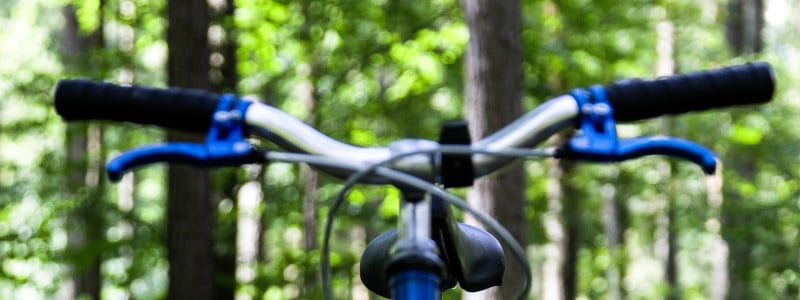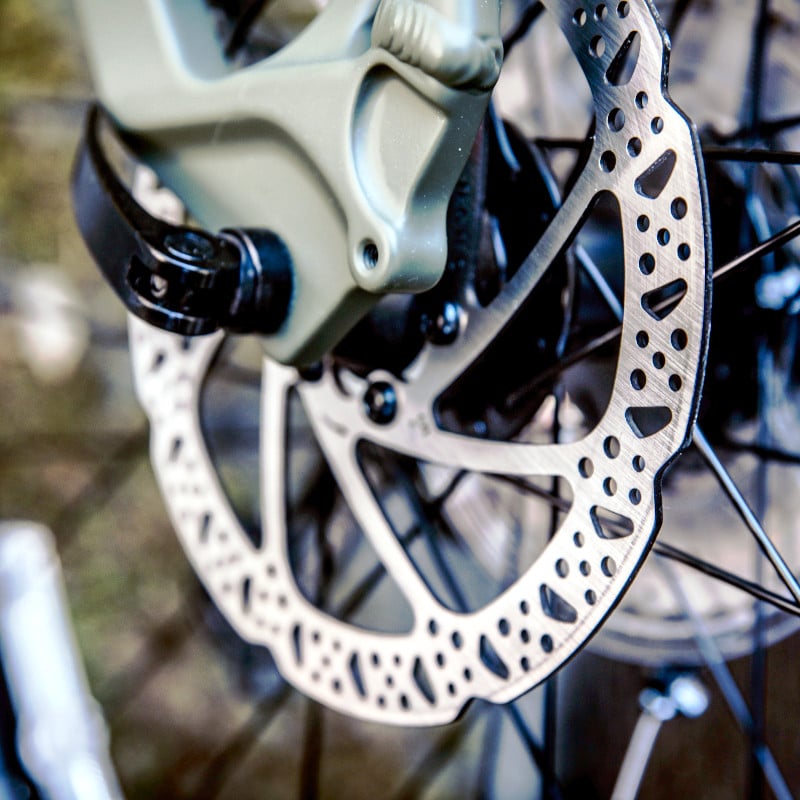Easily the most crucial components on your ebike are the parts that work together to bring your ebike to a halt, safely. The braking system.
Systems vary, but the most common braking systems consist of brake levers, cables, and calipers and pads, and a metal disc attached to the wheel. Pulling the lever on the handlebar, tensions the cable, and works the pads on the caliper to clamp on the disc on the wheel, creating friction on the rotating wheel and slowing it to a stop. It is a simple system, a neat and well used system, age proven, and is an essential system that makes taking out your ebike a safe experience.
Are Both Ebike Brakes Working Efficiently?
Both Brakes Should Work Perfectly
The braking system is something that you can’t take chances with. If a fault develops, or a component breaks, then that is something that should be dealt with as a matter of urgency. You need both front and back brakes working efficiently. Don’t over rely on one brake because of a fault on the other. Have both brakes working well before you take your ebike on the road.
Like most other things in life, if a small problem develops, it will grow into a major issue if not rectified quickly. Braking systems are just the same. Small issues, if not dealt with, can lead to serious safety problems, and possibly expensive repairs down the road. Therefore, treat the small issues as they develop to stay safe and keep your ebike in optimum condition.
Test Before Use
Before you begin a journey, test both front and back brakes before you go. It takes a second to do so and ensures you can be confident in your ability to stop your ebike when you need to apply the brakes.
Do You Periodically Check the Braking Components?
Components wear, and everything connected to the braking system should be maintained and serviced at least once a year. Between times though, it is wise to get into a regime of checking the major parts of the system at least monthly, or definitely before a good road trip. Checking, adjusting when required, and cleaning the braking system are routine parts of ebike ownership and shouldn’t be ignored. These routine checks don’t take up much time, and could save your life. They could also save you a great deal of money, if small issues are dealt with quickly, rather than left to develop into expensive major faults.

Check the Levers and Cables
Brake levers on the handlebars should be reachable and easy to pull to apply the brakes. Ensure you can easily reach the brake when necessary and that nothing else on the handlebar impedes or stops the lever being pulled when fully applied. Keep anything, such as bells, or phone holders, away from your brake levers.
Brake cables can stretch over time and require adjustment to compensate. Resort to your user manual, or seek advice from your local cycle shop if you are unsure how to do this. Verify when adjusted that the cables are all connected and the pistons in the caliper press on the brake disc when you pull the brake lever.

Cable or Hydraulic Brakes
Some ebikes may have hydraulic disc brakes. Both have pros and cons, though for effortless powerful braking, hydraulic brakes win the prize. Cables are easier to maintain and cheaper to replace than leaking cylinders or pistons, though a good hydraulic system will be low maintenance and self-adjusting. Whatever system is fitted to your ebike, ensure regular cleaning and servicing to maintain optimum braking performance.
See also: Ebike Tires
And: Gearing on Ebikes
Clean the Brake Disc (Rotor)
If mud and dirt accumulate on the brake disc, then braking efficiency is compromised. A wet cloth or towel is enough to remove most dirt and keep the braking surfaces of the disc clean. Ensure nothing impedes the brake pads clamping the disc when the brake is applied. When cleaning, also look for any damage to the disc. Cracks and breaks can happen, or securing bolts can work loose. Replace any faulty components, or tighten up any loose bolts immediately.
Ebike Brake Pads
The brake pad clamps against the disc and it is this action that slows you down. Check the pads are clamping ok when the brake is applied. Check they are not worn down and that the surfaces of the pads aren’t contaminated with oil or some other foreign body. You can buy specific brake cleaners for brake pads. These are specially developed and can be used without any deprecation on braking efficiency.
Ebike Brake Calipers
Brake calipers should be properly aligned. Alignment should be checked regularly as braking can be affected if the caliper is misaligned. Wear and tear, bumps and knocks, and loose fixing bolts can all lead to a caliper being misaligned. Most calipers can be realigned easily, though if you are unsure, consult your ebike manual, or ask the local bike shop to do this for you. However, to get the most from your braking system, brake calipers should always be properly aligned.
An Ebike Braking System that Works
Above all, everything on your ebike should work. This is especially true of the braking system. Both brakes should work well, and efficiently bring you to a safe stop whenever you require to apply them. Don’t be a chancer and take a gamble on your safety by taking out an ebike with a faulty braking system. Accidents can happen, and severe accidents can happen if your brakes fail when you need them the most.


Comments are closed.